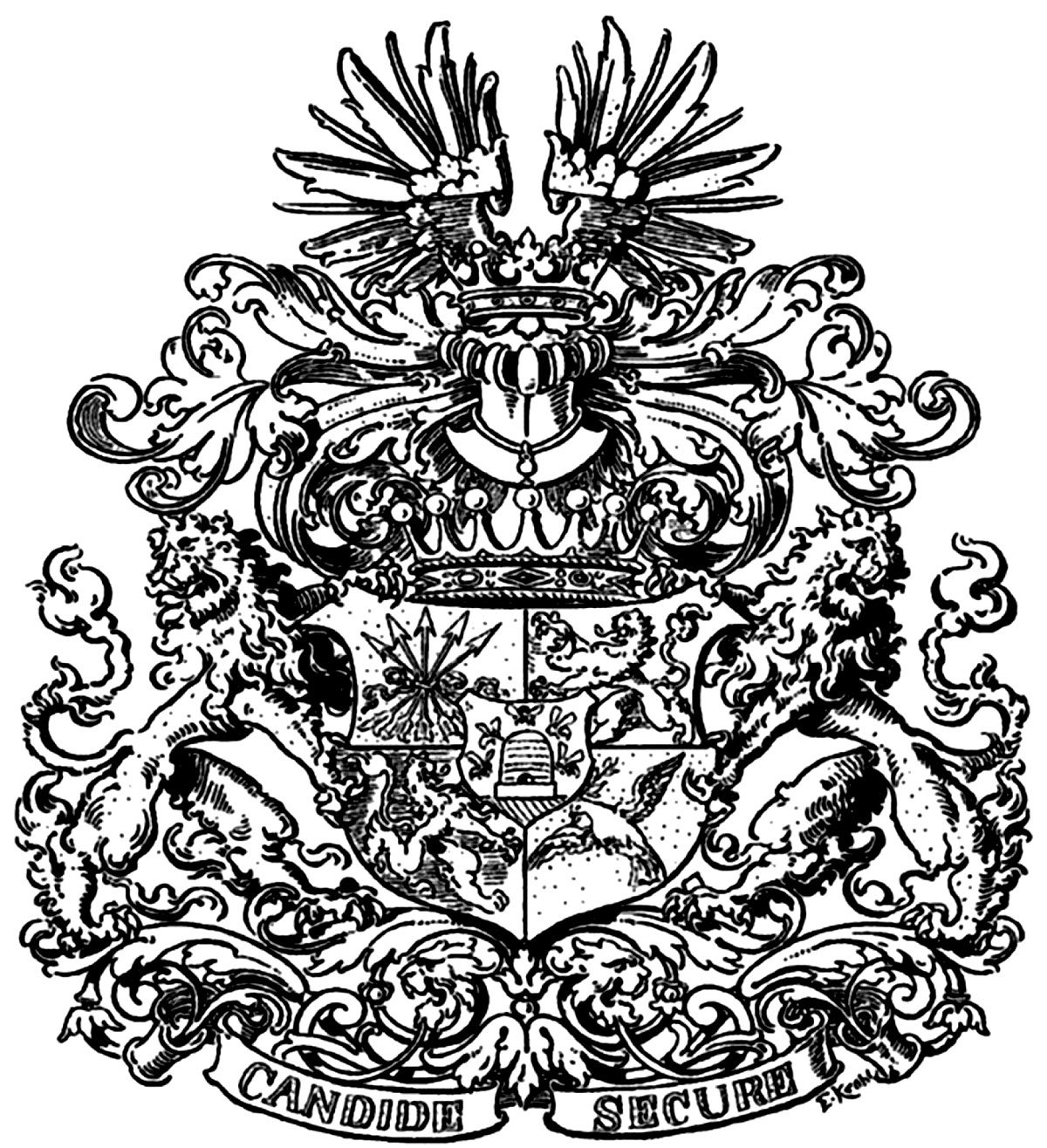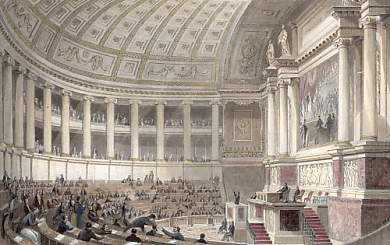|
Baron Jules De Koenigswarter
Baron Jules Adolphe de Kœnigswarter (''also'' Königswarter) (7 March 1904 – 15 February 1995), was a French soldier and diplomat of Jewish descent. Early life Koenigswarter was born on 7 March 1904 at 22 Rue Galilée in Paris into a large and prominent Königswarter family. He was the son of French banker Baron Louis Léon de Koenigswarter (1870–1931) and Jeanne Thècle (née Kauffmann) de Koenigswarter.Mosley, Charles, editor, ''Burke's Peerage, Baronetage & Knightage, 107th edition, 3 volumes'' (Wilmington, Delaware, U.S.A.: Burke's Peerage (Genealogical Books) Ltd, 2003), volume 3, page 3417. His younger sister, Marguerite de Koenigswarter, was married to André Gustave Bicart-Sée. The Koenigswarter barony had been created in 1870 by Emperor Napoleon III for his great-grandfather, Louis-Jean Koenigswarter, Deputy for the Seine. His paternal grandparents were Jules Louis Maximilien Koenigswarter (son of ) and Angelica Lea (née Franchetti) Koenigswarter, who was born ... [...More Info...] [...Related Items...] OR: [Wikipedia] [Google] [Baidu] |
French Ambassador To Peru
French (french: français(e), link=no) may refer to: * Something of, from, or related to France ** French language, which originated in France, and its various dialects and accents ** French people, a nation and ethnic group identified with France ** French cuisine, cooking traditions and practices Fortnite French places Arts and media * The French (band), a British rock band * French (episode), "French" (episode), a live-action episode of ''The Super Mario Bros. Super Show!'' * Française (film), ''Française'' (film), 2008 * French Stewart (born 1964), American actor Other uses * French (surname), a surname (including a list of people with the name) * French (tunic), a particular type of military jacket or tunic used in the Russian Empire and Soviet Union * French's, an American brand of mustard condiment * French catheter scale, a unit of measurement of diameter * French Defence, a chess opening * French kiss, a type of kiss involving the tongue See also * France (disam ... [...More Info...] [...Related Items...] OR: [Wikipedia] [Google] [Baidu] |
Wilmington, Delaware
Wilmington ( Lenape: ''Paxahakink /'' ''Pakehakink)'' is the largest city in the U.S. state of Delaware. The city was built on the site of Fort Christina, the first Swedish settlement in North America. It lies at the confluence of the Christina River and Brandywine Creek, near where the Christina flows into the Delaware River. It is the county seat of New Castle County and one of the major cities in the Delaware Valley metropolitan area. Wilmington was named by Proprietor Thomas Penn after his friend Spencer Compton, Earl of Wilmington, who was prime minister during the reign of George II of Great Britain. At the 2020 census, the city's population was 70,898. The Wilmington Metropolitan Division, comprising New Castle County, Delaware, Cecil County, Maryland and Salem County, New Jersey, had an estimated 2016 population of 719,887. Wilmington is part of the Delaware Valley metropolitan statistical area, which also includes Philadelphia, Reading, Camden, and other urban are ... [...More Info...] [...Related Items...] OR: [Wikipedia] [Google] [Baidu] |
Robert Calmann-Lévy
The name Robert is an ancient Germanic given name, from Proto-Germanic "fame" and "bright" (''Hrōþiberhtaz''). Compare Old Dutch ''Robrecht'' and Old High German ''Hrodebert'' (a compound of '' Hruod'' ( non, Hróðr) "fame, glory, honour, praise, renown" and ''berht'' "bright, light, shining"). It is the second most frequently used given name of ancient Germanic origin. It is also in use as a surname. Another commonly used form of the name is Rupert. After becoming widely used in Continental Europe it entered England in its Old French form ''Robert'', where an Old English cognate form (''Hrēodbēorht'', ''Hrodberht'', ''Hrēodbēorð'', ''Hrœdbœrð'', ''Hrœdberð'', ''Hrōðberχtŕ'') had existed before the Norman Conquest. The feminine version is Roberta. The Italian, Portuguese, and Spanish form is Roberto. Robert is also a common name in many Germanic languages, including English, German, Dutch, Norwegian, Swedish, Scots, Danish, and Icelandic. It can be use ... [...More Info...] [...Related Items...] OR: [Wikipedia] [Google] [Baidu] |
Praslin, Aube
Praslin () is a commune in the Aube department in north-central France. Population See also *Communes of the Aube department The following is a list of the 431 communes of the Aube department of France. The communes cooperate in the following intercommunalities (as of 2020):Communes of Aube Aube communes articles needing translation from French Wikipedia {{Aube-geo-stub ... [...More Info...] [...Related Items...] OR: [Wikipedia] [Google] [Baidu] |
Choiseul Family
{{Unreferenced, date=April 2019 Choiseul is an illustrious noble family from Champagne, France, descendants of the comtes of Langres. The family's head was Renaud III de Choiseul, comte de Langres and sire de Choiseul, who in 1182 married Alix de Dreux, daughter of Louis VI of France. It has formed into the Langres, Clémont, Aigremont, Beaugré, Allecourt, Frontières, Praslin, Plessis branches, among others. It also took the name Choiseul-Gouffier from the 18th century onwards. It has produced several marshals: * Jean de Baudricourt (?–1499), seigneur of Baudricourt and of Choiseul * Charles de Choiseul, comte of the Plessis-Praslin (1563–1626), who served under Henri IV and Louis XIII * César de Choiseul du Plessis-Praslin, duc de Choiseul (1598–1675), who defied Turenne at Rethel (1650), when he commanded the Spanish army * César, duc de Choiseul (1602–1675), French marshal and diplomat, generally known for the best part of his life as marshal du Pless ... [...More Info...] [...Related Items...] OR: [Wikipedia] [Google] [Baidu] |
Gaston Calmann-Lévy
Gaston is a masculine given name of French origin and a surname. The name "Gaston" may refer to: People First name *Gaston I, Count of Foix (1287–1315) *Gaston II, Count of Foix (1308–1343) *Gaston III, Count of Foix (1331–1391) *Gaston IV, Count of Foix (1422–1472) *Gaston I, Viscount of Béarn (died circa 980) *Gaston II, Viscount of Béarn (circa 951 – 1012) *Gaston III, Viscount of Béarn (died on or before 1045) *Gaston IV, Viscount of Béarn (died 1131) *Gaston V, Viscount of Béarn (died 1170) *Gaston VI, Viscount of Béarn (1173–1214) *Gaston VII, Viscount of Béarn (1225–1290) *Gaston of Foix, Prince of Viana (1444–1470) * Gaston, Count of Marsan (1721–1743) *Gaston, Duke of Orléans (1608–1660), French nobleman *Gaston Bachelard (1884–1962), French philosopher *Gaston Balande (1880–1971), French painter and illustrator *Gaston Browne (born 1967), Antiguan politician and Prime Minister *Gaston Caperton (born 1940), American politician *Gaston Chev ... [...More Info...] [...Related Items...] OR: [Wikipedia] [Google] [Baidu] |
Fernand Halphen
Fernand Gustave Halphen (18 February 1872 – 16 May 1917) was a French Jewish composer. Life and career Fernand Halphen was the son of Georges Halphen, a diamond merchant, and of Henriette Antonia Stern (1836–1905), who was from the Stern banking family. From the age of ten, he studied under the direction of Gabriel Fauré before entering the Paris Conservatory where he took a composition course taught by Ernest Guiraud, who also taught Paul Dukas, Claude Debussy and Erik Satie. After Guiraud's death in 1892, Halphen studied with Jules Massenet, who also taught Henri Rabaud, Florent Schmitt, Charles Koechlin and Reynaldo Hahn. He won first prize for his fugue in 1895, and the next year won second place for the second Grand Prix de Rome with his cantata ''Mélusine'', behind Jules Mouquet and Richard d'Ivry. Fernand Halphen is known principally as a composer. Among his notable works are the one-act opera ''Le Cor Fleuri'' (libretto by Ephraïm Mikhael and André-Ferdin ... [...More Info...] [...Related Items...] OR: [Wikipedia] [Google] [Baidu] |
Italy
Italy ( it, Italia ), officially the Italian Republic, ) or the Republic of Italy, is a country in Southern Europe. It is located in the middle of the Mediterranean Sea, and its territory largely coincides with the homonymous geographical region. Italy is also considered part of Western Europe, and shares land borders with France, Switzerland, Austria, Slovenia and the enclaved microstates of Vatican City and San Marino. It has a territorial exclave in Switzerland, Campione. Italy covers an area of , with a population of over 60 million. It is the third-most populous member state of the European Union, the sixth-most populous country in Europe, and the tenth-largest country in the continent by land area. Italy's capital and largest city is Rome. Italy was the native place of many civilizations such as the Italic peoples and the Etruscans, while due to its central geographic location in Southern Europe and the Mediterranean, the country has also historically been home ... [...More Info...] [...Related Items...] OR: [Wikipedia] [Google] [Baidu] |
Livorno
Livorno () is a port city on the Ligurian Sea on the western coast of Tuscany, Italy. It is the capital of the Province of Livorno, having a population of 158,493 residents in December 2017. It is traditionally known in English as Leghorn (pronounced , "Leghorn" in the . or ). During the , Livorno was designed as an "". Developing c ... [...More Info...] [...Related Items...] OR: [Wikipedia] [Google] [Baidu] |
Isabella Stewart Gardner Museum
The Isabella Stewart Gardner Museum is an art museum in Boston, Massachusetts, which houses significant examples of European, Asian, and American art. Its collection includes paintings, sculpture, tapestries, and decorative arts. It was founded by Isabella Stewart Gardner, whose will called for her art collection to be permanently exhibited "for the education and enjoyment of the public forever." An auxiliary wing designed by Italian architect Renzo Piano, adjacent to the original structure near the Back Bay Fens, was completed in 2012. In 1990, thirteen of the museum's works were stolen; the crime remains unsolved, and the works, valued at an estimated $500 million, have not been recovered. A $10 million reward for information leading to the art's recovery remains in place. History The museum was built in 1898–1901 by Isabella Stewart Gardner (1840–1924), an American art collector, philanthropist, and patron of the arts in the style of a 15th-century Venetian palace. It ... [...More Info...] [...Related Items...] OR: [Wikipedia] [Google] [Baidu] |
Seine
) , mouth_location = Le Havre/Honfleur , mouth_coordinates = , mouth_elevation = , progression = , river_system = Seine basin , basin_size = , tributaries_left = Yonne, Loing, Eure, Risle , tributaries_right = Ource, Aube, Marne, Oise, Epte The Seine ( , ) is a river in northern France. Its drainage basin is in the Paris Basin (a geological relative lowland) covering most of northern France. It rises at Source-Seine, northwest of Dijon in northeastern France in the Langres plateau, flowing through Paris and into the English Channel at Le Havre (and Honfleur on the left bank). It is navigable by ocean-going vessels as far as Rouen, from the sea. Over 60 percent of its length, as far as Burgundy, is negotiable by large barges and most tour boats, and nearly its whole length is available for recreational boating; excursion boats offer sightseeing tours of the river banks in the capital city, Paris. There are 37 bridges in P ... [...More Info...] [...Related Items...] OR: [Wikipedia] [Google] [Baidu] |
Chamber Of Deputies (France)
Chamber of Deputies (french: Chambre des députés) was a parliamentary body in France in the nineteenth and twentieth centuries: * 1814–1848 during the Bourbon Restoration and the July Monarchy, the Chamber of Deputies was the lower house of the French Parliament, elected by census suffrage. * 1875–1940 during the French Third Republic, the Chamber of Deputies was the legislative assembly of the French Parliament, elected by universal suffrage. When reunited with the Senate in Versailles, the French Parliament was called the National Assembly (''Assemblée nationale'') and carried out the election of the president of the French Republic. During the Bourbon Restoration Created by the Charter of 1814 and replacing the Corps législatif, which existed under the First French Empire, the Chamber of Deputies was composed of individuals elected by census suffrage. Its role was to discuss laws and, most importantly, to vote taxes. According to the Charter, deputies were elected f ... [...More Info...] [...Related Items...] OR: [Wikipedia] [Google] [Baidu] |





